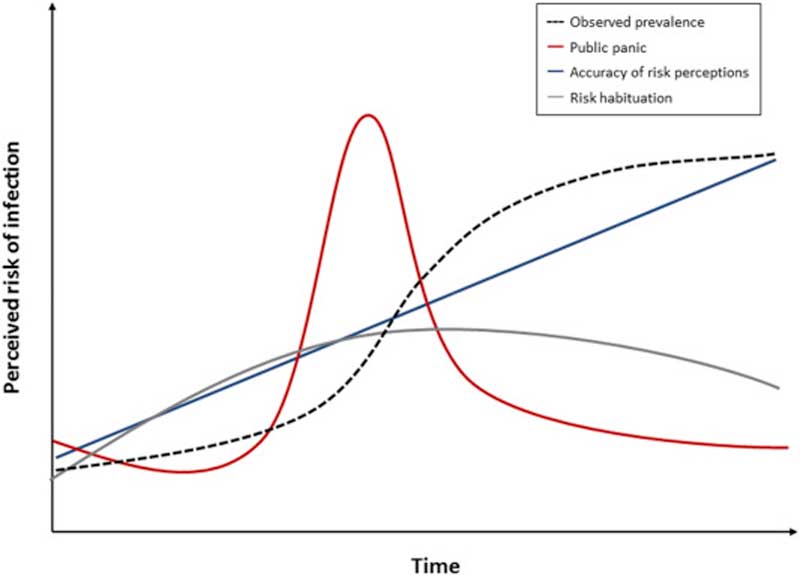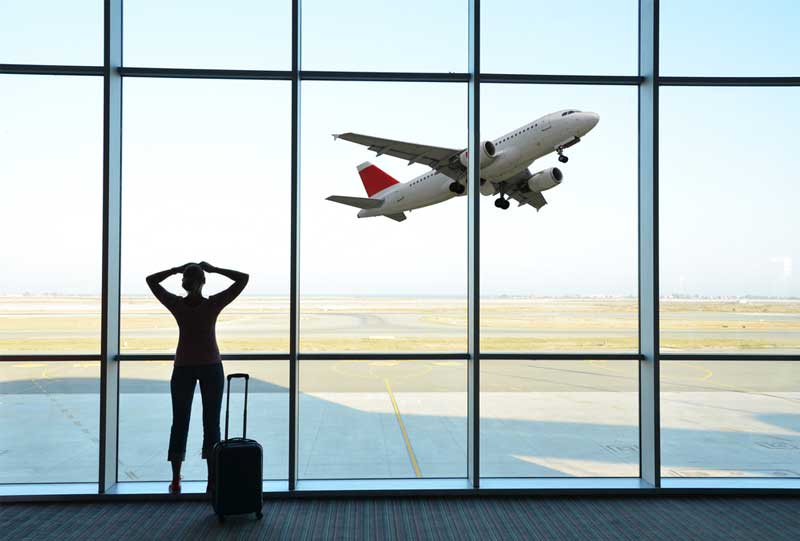Behavioral fatigue caused by pandemic

“People won’t get ‘tired’ of social distancing and it’s unscientific to suggest otherwise. Behavioural fatigue has no basis in science”.
‘Behavioural fatigue’ became a hot topic because it was part of the UK Government’s justification for delaying the introduction of stricter public health measures. They quickly reversed this position and we’re now in the “empty streets” stage of infection control.
But it’s an important topic and is relevant to all of us as we try to maintain important behavioral changes that benefit others.
For me, one key point is that, actually, there are many relevant scientific studies that tackle this. And I have to say, I’m a little disappointed that there were some public pronouncements that ‘there is no evidence’ in the mainstream media without anyone making the effort to seek it out.
The reaction to epidemics has actually been quite well studied although it’s not clear that ‘fatigue’ is the right way of understanding any potential decline in people’s compliance. This phrase doesn’t seem to be used in the medical literature in this context and it may well have been simply convenient, albeit confusing, a metaphor for ‘decline’ used in interviews.
In fact, most studies of changes in compliance focus on the effect of changing risk perception, and it turns out that this often poorly tracks the actual risk. Below is a graph from a recent paper illustrating a widely used model of how risk perception tracks epidemics.
Notably, this model was first published in the 1990s based on data available even then. It suggests that increases in risk tend to make us overestimate the danger, particularly for surprising events, but then as the risk objectively increases we start to get used to living in the ‘new normal’ and our perception of risk decreases, sometimes unhelpfully so.
What this doesn’t tell us is whether people’s behavior changes over time. However, lots of studies have been done since then, including on the 2009 H1N1 flu pandemic – where a lot of this research was conducted.
To cut a long story short, many, but not all, of these studies find that people tend to reduce their use of at least some preventative measures (like hand washing, social distancing) as the epidemic increases, and this has been looked at in various ways.
When asking people to report their own behaviors, several studies found evidence for a reduction in at least some preventative measures (usually alongside evidence for good compliance with others).
This was found in one study in Italy, two studies in Hong Kong, and one study in Malaysia.
In Holland during the 2006 bird flu outbreak, one study did seven follow-ups and found a fluctuating pattern of compliance with preventive measures. People ramped up their prevention efforts, then there was a dip, then they increased again.
Some studies have looked for objective evidence of behavior change and one of the most interesting looked at changes in social distancing during the 2009 outbreak in Mexico by measuring television viewing as a proxy for time spent in the home. This study found that consistent with an increase in social distancing at the beginning of the outbreak, television viewing greatly increased, but as time went on, and the outbreak grew, television viewing dropped. To try and double-check their conclusions, they showed that television viewing predicted infection rates.
One study looked at airline passengers’ missed flights during the 2009 outbreak – given that flying with a bunch of people in an enclosed space is likely to spread flu. There was a massive spike of missed flights at the beginning of the pandemic but this quickly dropped off as the infection rate climbed, although later, missed flights did begin to track infection rates more closely.
There are also some relevant qualitative studies. These are where people are free-form interviewed and the themes of what they say are reported. These studies reported that people resist some behavioral measures during outbreaks as they increasingly start to conflict with family demands, economic pressures, and so on.
Rather than measuring people’s compliance with health behaviors, several studies looked at how epidemics change and used mathematical models to test out ideas about what could account for their course.
One well-recognized finding is that epidemics often come in waves. A surge, a quieter period, a surge, a quieter period, and so on.
Several mathematical modeling studies have suggested that people’s declining compliance with preventative measures could account for this. This has been found with simulated epidemics but also when looking at real data, such as that from the 1918 flu pandemic. The 1918 epidemic was an interesting example because there was no vaccine and so behavioral changes were pretty much the only preventative measure.
And some studies showed no evidence of ‘behavioral fatigue’ at all.
One study in the Netherlands showed a stable increase in people taking preventative measures with no evidence of decline at any point.
Another study conducted in Beijing found that people tended to maintain compliance with low effort measures (ventilating rooms, catching coughs and sneezes, washing hands) and tended to increase the level of high effort measures (stockpiling, buying face masks).
This improved compliance was also seen in a study that looked at an outbreak of the mosquito-borne disease chikungunya.
This is not meant to be a complete review of these studies (do add any others below) but I’m presenting them here to show that actually, there is lots of relevant evidence about ‘behavioral fatigue’ despite the fact that mainstream articles can get published by people declaring it ‘has no basis in science’.
In fact, this topic is almost a sub-field in some disciplines. Epidemiologists have been trying to incorporate behavioral dynamics into their models. Economists have been trying to model the ‘prevalence elasticity’ of preventative behaviors as epidemics progress. Game theorists have been creating models of behavior change in terms of individuals’ strategic decision-making.
The lessons here are two-fold I think.
The first is for scientists to be cautious when taking public positions. This is particularly important in times of crisis. Most scientific fields are complex and can be opaque even to other scientists in closely related fields. Your voice has influenced so please consider (and indeed research) what you say.
The second is for all of us. We are currently in the middle of a pandemic and we have been asked to take essential measures.
In past pandemics, people started to drop their life-saving behavioral changes as the risk seemed to become routine, even as the actual danger increased.
This is not inevitable, because in some places, and in some outbreaks, people managed to stick with them.
We can be like the folks who stuck with these strange new rituals, who didn’t let their guard down, and who saved the lives of countless people they never met.











